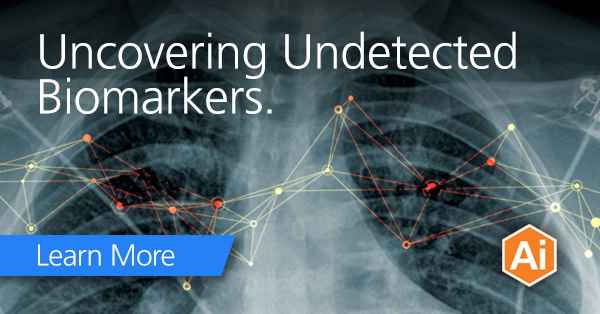Consortium to Study Use of X-ray for Earlier Diagnosis of Idiopathic Pulmonary Fibrosis
 The Open Source Imaging Consortium (OSIC) is launching a pilot study that will examine whether radiographs can provide an early window into manifestations of idiopathic pulmonary fibrosis (IPF) that are currently undetected, thus leading to earlier diagnosis and treatment.
The Open Source Imaging Consortium (OSIC) is launching a pilot study that will examine whether radiographs can provide an early window into manifestations of idiopathic pulmonary fibrosis (IPF) that are currently undetected, thus leading to earlier diagnosis and treatment.
Carestream is funding and participating in the study that will pair X-rays of consented patients with their high-resolution CTs (HRCTs), as well as weekly forced vital capacity (FVC) readings via the patientMpower app for home spirometry. The data will be available through the OSIC Data Respository to AI experts and other collaborators to design algorithms that could potentially identify novel biomarkers and relate radiograph quantifications to clinical indicators, and to disease risk and prognostication factors.
“Carestream is actively involved in OSIC and we are funding Project OPUS because we believe there is a strong possibility that X-ray, when coupled with artificial intelligence, can enable earlier diagnosis and eventually disease management of IPF. This could offer opportunities for the development of new clinical solutions leveraging X-ray, a widely available and more affordable imaging modality than CT,” said Luca Bogoni, PhD, Head of Advanced Research and Innovation at Carestream.
IPF is a devastating and nearly always fatal disease that affects about 128,000 people in the US. It is a diagnosis of elimination, and usually takes about 26 months from the time symptoms of shortness of breath or dry cough present to the time a patient is referred to a pulmonologist.
As with most lung pathologies, the tools used for initial assessment are X-rays and blood work—neither of which currently provide enough information to make a diagnosis. High-resolution CT imaging along with drugs, surgery and other therapy are the primary tools for managing care.
“Today the standard of care is HRCTs, yet two-thirds of the world do not have access to this modality,” said Elizabeth Estes, OSIC Executive Director. “If this pilot uncovers markers that are currently undetected in X-rays, it could lead to earlier detection and treatment of patients with IPF. The implications for improving patient outcomes could be significant.”
OSIC will recruit between 100 to 200 patients from around the world who will provide access to their EMRs, X-rays and HRCTs leading up to their diagnoses. Radiologists, pulmonologists and AI experts will look for patterns in the scans and associated data to see if they can uncover markers that are currently going undetected.
OSIC hopes to expand the study to include data from as many as 2,000 patients. Project OPUS is a collaborative effort between OSIC, Carestream, patientMpower, the American Lung Association (ALA), European Pulmonary Fibrosis Federation (EU-IPFF) and Action for Pulmonary Fibrosis (APF).
“Project OPUS is just one area where Carestream is exploring the potential of X-ray imaging to play an expanded role in diagnosis and care management of various pathologies,” said Dr Bogoni. “Recent and emerging innovations in AI and post-processing software are expanding the clinical value of X-ray imaging to potentially diagnose a broader range of conditions that up to now have been relegated to being diagnosed using CT or MR.”